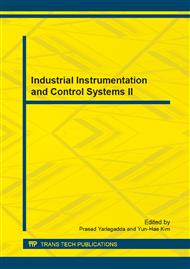p.2171
p.2175
p.2182
p.2188
p.2195
p.2199
p.2203
p.2207
p.2213
The Data Self-Destruction Technology Research Used in Marine Environmental Monitoring Buoy System
Abstract:
Faced up with the fact that the buoy used in marine environmental monitoring did not install the self-destruction mechanism, and combined with the current development of the data destruction technology, data self-destruction technology for buoy was researched. The study shows that when the buoy system is out of control, it can select the two different data self-destruction methods by analyze different degree of threat which buoy system suffered. So it can destruct the marine environmental factor data in a fast and effective way, and make the data be unrecovered, thereby prevent data leaks, ensure data security.
Info:
Periodical:
Pages:
2195-2198
Citation:
Online since:
July 2013
Authors:
Price:
Сopyright:
© 2013 Trans Tech Publications Ltd. All Rights Reserved
Share:
Citation:


